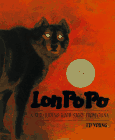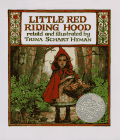| Introduction | Annotated Tales | eBooks | Bookstore | Illustration Gallery | Discussion Board | Blog |
 |
|
Best of the Web Read Little Red Riding Hood Themed Posts on the SurLaLune Blog Little
Red Riding Hood Stories collected The
Path of Needles or Pins: Little Red Riding Hood Little Red Riding Hood Project at the University of Southern Mississippi
|
Little Red Riding Hood is one of the few popular tales that has no known literary version prior to the publication of the tale in Charles Perrault's Histoires ou Contes du temps passe (1697). The tale did exist orally prior to Perrault's version, but we do not have enough information to know how old the tale is. After Perrault's version was published, the tale rapidly grew in popularity; it was anthologized in several English fairy tale collections during the 18th century, such as in A Pretty Book for Children; or, an Easy Guide to the English Tongue (1744) and later in The Top Book of All, for Little Misters and Misses (1760). The first English version of the tale was a translation of Perrault's collection Histories, or Tales of Past Times (1729). The earliest illustrations for the tale were some of the first woodcuts by Thomas Betwick (attributed). In 1803, the tale was written as a pantomime by Charles Dibdin (Red Ridinghood; or, The Wolf Robber). Charles Dickens, the famous English author of Tale of Two Cities and Great Expectations, called Little Red Riding Hood his first love. "I should have known perfect bliss," he claimed if he had been able to marry her. Some scholars believe that the ending dialog between Red Riding Hood and the Wolf has been the reason for the tale's neverending popularity. The questions about the wolf's ears, mouth, etc. bring rising suspense and humor to the tale. Although Perrault's version ends with the Wolf eating Riding Hood, many later versions have been changed to "happier" endings. Little Red Riding Hood has been killed, rescued or escaped in various versions. Sometimes the Grandmother survives, too. The rescuer is most often a hunter, but sometimes the girl's father or herself (Opie 1974). To learn more about Little Red Riding Hood and to read the first English version of the tale, please read The Classic Fairy Tales by Peter and Iona Opie. This history was derived from the Opie's book. |
|
| ©Heidi
Anne Heiner, SurLaLune Fairy Tales E-mail: heidi@surlalunefairytales.com Page created 1/1999; Last updated 3/1/2010 www.surlalunefairytales.com |




